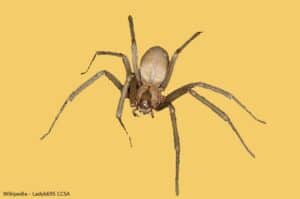Acorns of California and the Acorn Weevil
From wildlife to prehistoric cultures, the acorn has sustained many a life – be it human or critter. In California, gathering acorns to support life during the harsh winter months is important to many animals, especially Acorn Woodpeckers. (Not that California has harsh winters but tell that to a Southern Californian and he/she will say, “It really does get chilly…..and, on a cold winter´s morning, there´s even frost on our windshields…….!”)
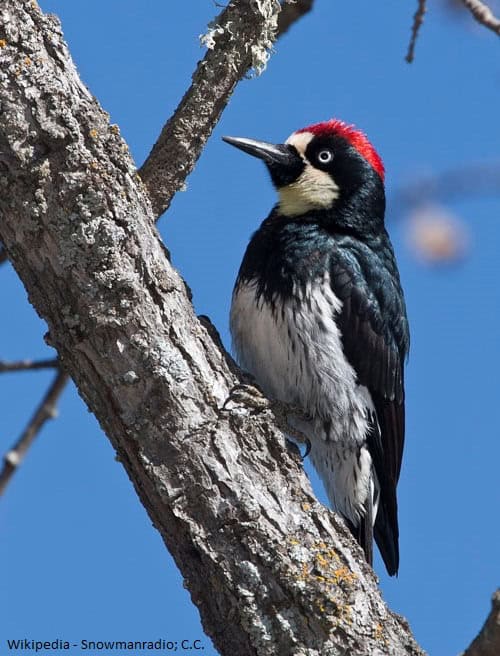
Acorn Woodpecker
When acorns are bountiful, the woodpecker´s numbers increase but on years when acorns are scarce, the number of Acorn Woodpeckers decline; in order to survive, sometimes these birds have to travel great distances to search for their acorns. In Julian, California, where the California Black Oak grows in abundance, a woodpecker found a perfect storage area for storing its acorns inside the column of a log cabin (see below).
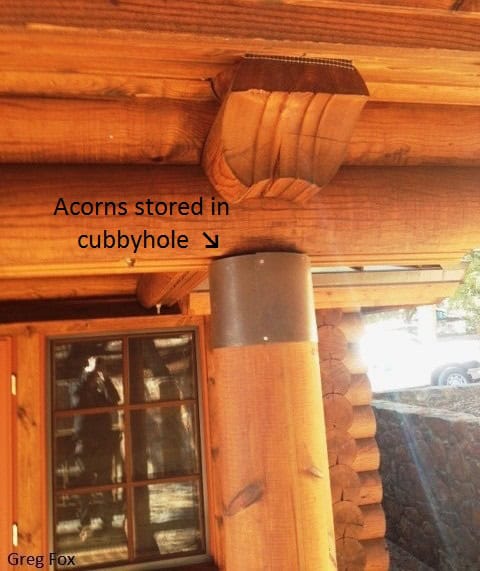
found a new way to store acorns over the winter.
The Acorn Woodpecker is a colorful, highly social bird with family groups of up to a dozen individuals. These social units raise their young together and gather acorns to store in their communal “granaries.” Acorn Woodpeckers aggressively defend their granaries from other acorn-eating critters such as squirrels and Western Scrub-Jays. Lazy Scrub-Jays often search for woodpecker granaries in order to “steal” acorns rather than collect their own.
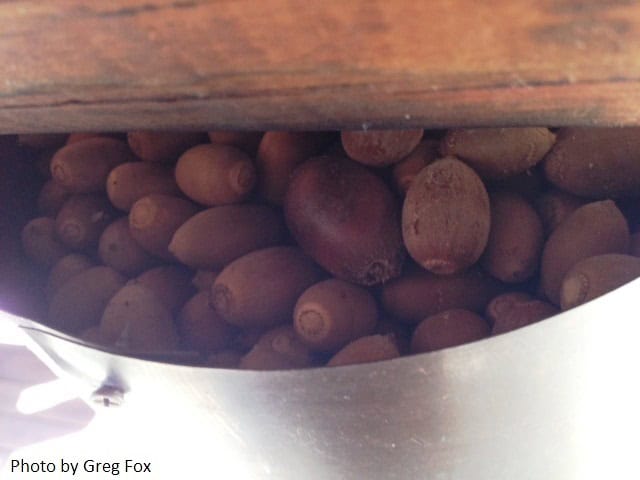
California Oak Trees
The most common oak tree in southern California is the Coast Live Oak. Other oak trees native to California are: Canyon Live Oaks (with large acorns), Scrub Oaks (smaller trees with stubby acorns), the Valley and Blue Oak, California Black Oak (Kellogg´s oak), and the rarer White Oak (Englemann´s Oak). Englemann Oak numbers have declined due to residential growth in southern California´s oak woodlands.
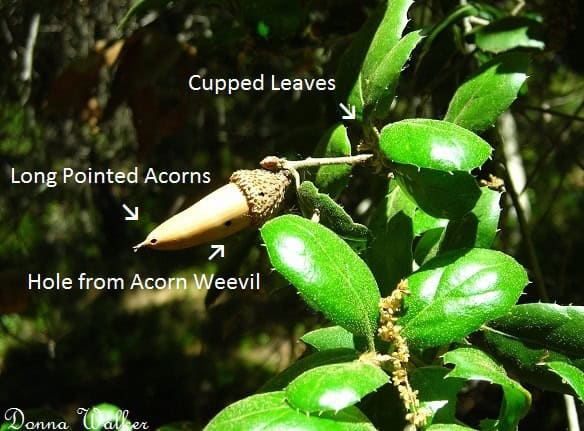
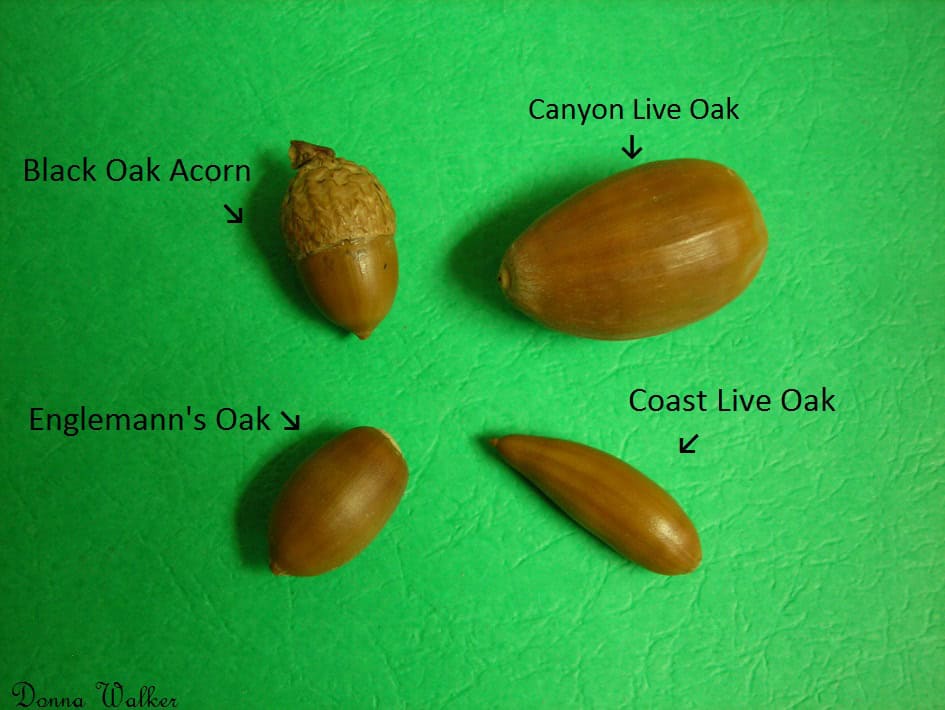
Acorns and Native Americans
Acorns were a main food source for the indigenous people of Southern California. The Coast Live Oak´s acorns were gathered by most tribes living in and near Oak Woodland habitats. The favored acorn, which comes from the California Black Oak, was a little harder to gather since the Black Oak grows within the mountainous regions of California.
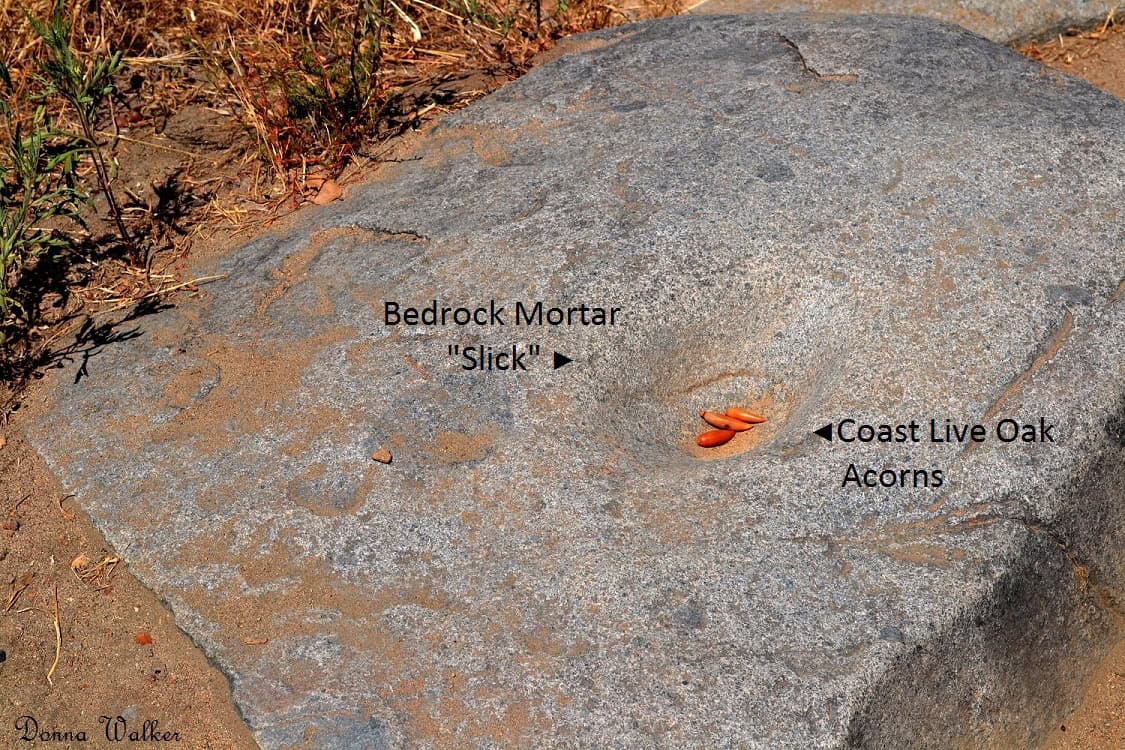
Native American Tribes, the Kumeyaay and Luiseño, made special trips up to the mountains during the fall harvest to collect acorns from the Black Oak, then stored them in granary baskets made from the Arroyo Willow (the willow has salicin in it, a natural insect repellent). Bedrock mortars (where acorns were ground into meal) are found throughout southern California as a testimony to the importance of acorns in the lives of these indigenous peoples.
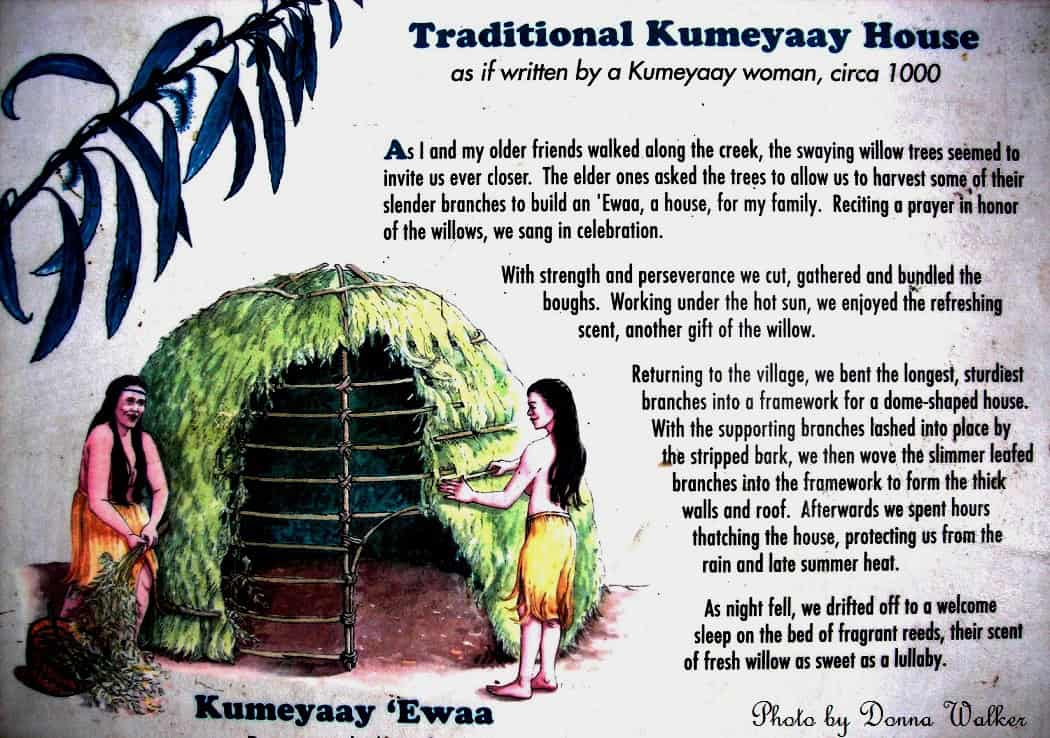
Pests in Prehistoric Times
Although acorns are no longer a food staple of today, contemporary Native Americans still process acorns to retain the traditions of their ancestors. Kumeyaay call their acorn mush “shawii” and in the Luiseño language, it´s called “weewish” or “wiwish.” Native Americans, back in prehistoric times, also had to worry about pest taking over their food supply. Because of a certain pest, the Acorn Weevil (Curculio pardus), California Indians were one of the first people to practice the use of controlled fires. Weevils and other pests such as the acorn moth both destroy up to 95% of an oak´s acorns.
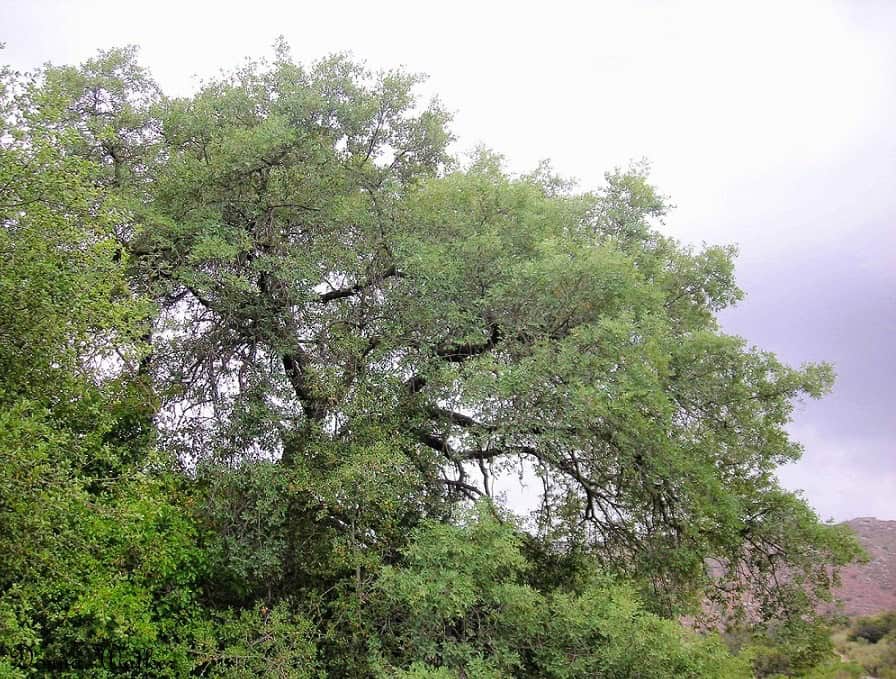
Englemann Oaks are found only in Southern California.
Acorn Weevils are Pests
Acorn Weevils are pests; they suck out the fat from an acorn before the nut has had a chance to form and then the female weevil fills it with her eggs which soon hatch into larvae, making the acorn inedible (Did I mention she covers the hole with her feces?). Heavy with eggs, the acorn falls to the ground; the larva then squeezes out of the hole and buries itself under leaf litter where it remains for 1-2 years until it reaches adulthood.
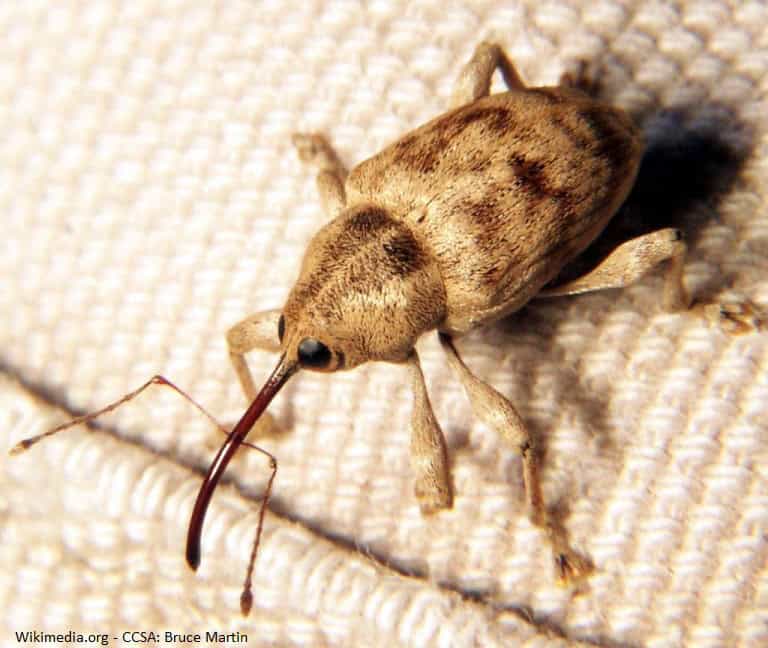
Regular burning of leaf litter was an important way for early people of California to control Acorn Weevil larvae from becoming adult pests that ruin their acorns. Today, the nuts from acorns remain a substantial food supply for our wildlife but the acorn moth and weevil continue to destroy a major percentage of the “oak nut” harvest.
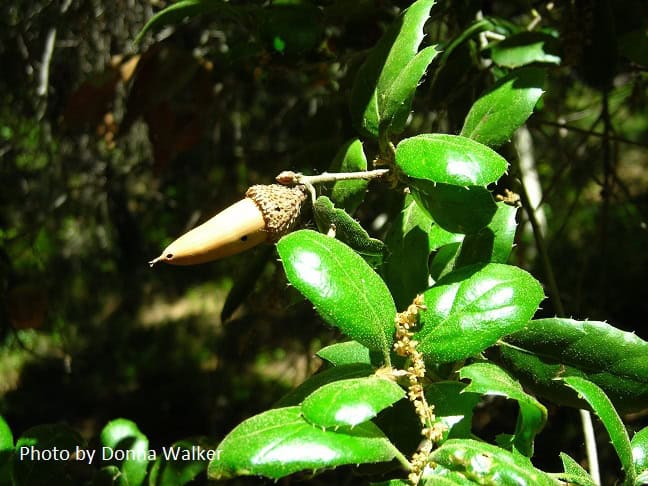
“Leaves of three let them be!” are often found underneath the big oak trees.
Next time you´re out for a hike or a nature walk, look for acorns underneath the Great Oaks and note their size and shape. Also, check to see if there is a hole in the acorn made by an Acorn Weevil. Oh, but be careful – During spring, Poison Oak grows underneath the oak trees in abundance – like a pretty, inviting, come-touch-me-hither green vine.
Article by Donna Walker
Photos
Each photo is attributed with the photographer´s name within the image.
References
Schoenherr, Allan A. 1991. A Natural History of California. Berkeley: University of California Press.
Wikipedia: Acorn Woodpecker; Acorn Weevil
Kumeyaay.info.com


